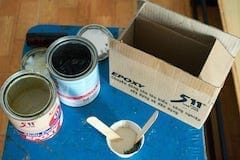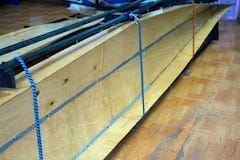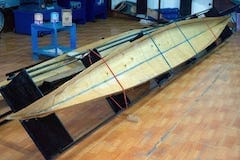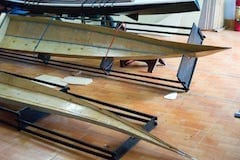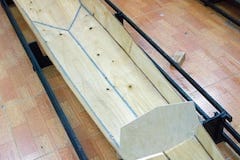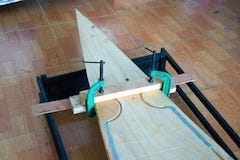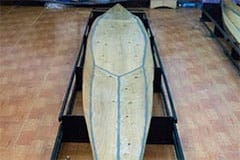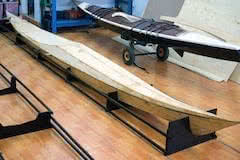The 511 putty comes in 2 parts: the resin and hardener, both premixed with a certain kind of thickening agent (filler), one has a dark gray and one has a yellowish color. Just stir them until you have a consistent light gray, highly viscous mixture. Since the hull and deck are tied to the framing boxes, I can easily slant the boxes to get the putty cured into the exact position, resulting into very clean seam lines. No need to use duct tapes to mask the lines though.
Fill the seams, wait for the putty to cure, cut the wires, then fill the remaining, repeat that for both the hull and deck parts. My precautious nature steps in as always, I made the seam lines of the hull much bolder and thicker, while the deck has very thin lines only. It’s easy, but it would take a few days to finish all these glueing tasks. After this, I would dry fit the two halves, to see if they match each other well, and to produce an initial impression of the final product also!
I recall glueing the seams of Hello World – 1, my first build. I used a small masonry trowel to apply the putty, about 1/2″ thick, and epoxy is all messing around. Now it’s much tidier and cleaner, and I don’t even need a pair of gloves and just work with my bare hands. Well, lots of little know – hows, skills and experiences that you could never learn if you don’t just really do it. About this time last year, I was so doubtful if I could even finish myself a boat, now it’s (almost) the third! 😀
A bit off topic here, but the thinking has been in my mind for a long time. About educational methodology, they’ve been arguing all the time, about knowledges, information, attitudes, practices, etc… But for me, it works a different way: if you want someone to build a boat, show him / her the immense beauty of the sea. Similarly, you don’t have to learn all those maths and algorithms to become a good coder, seek the inspiration in something else, e.g: the art of hand writing calligraphy! 😀

